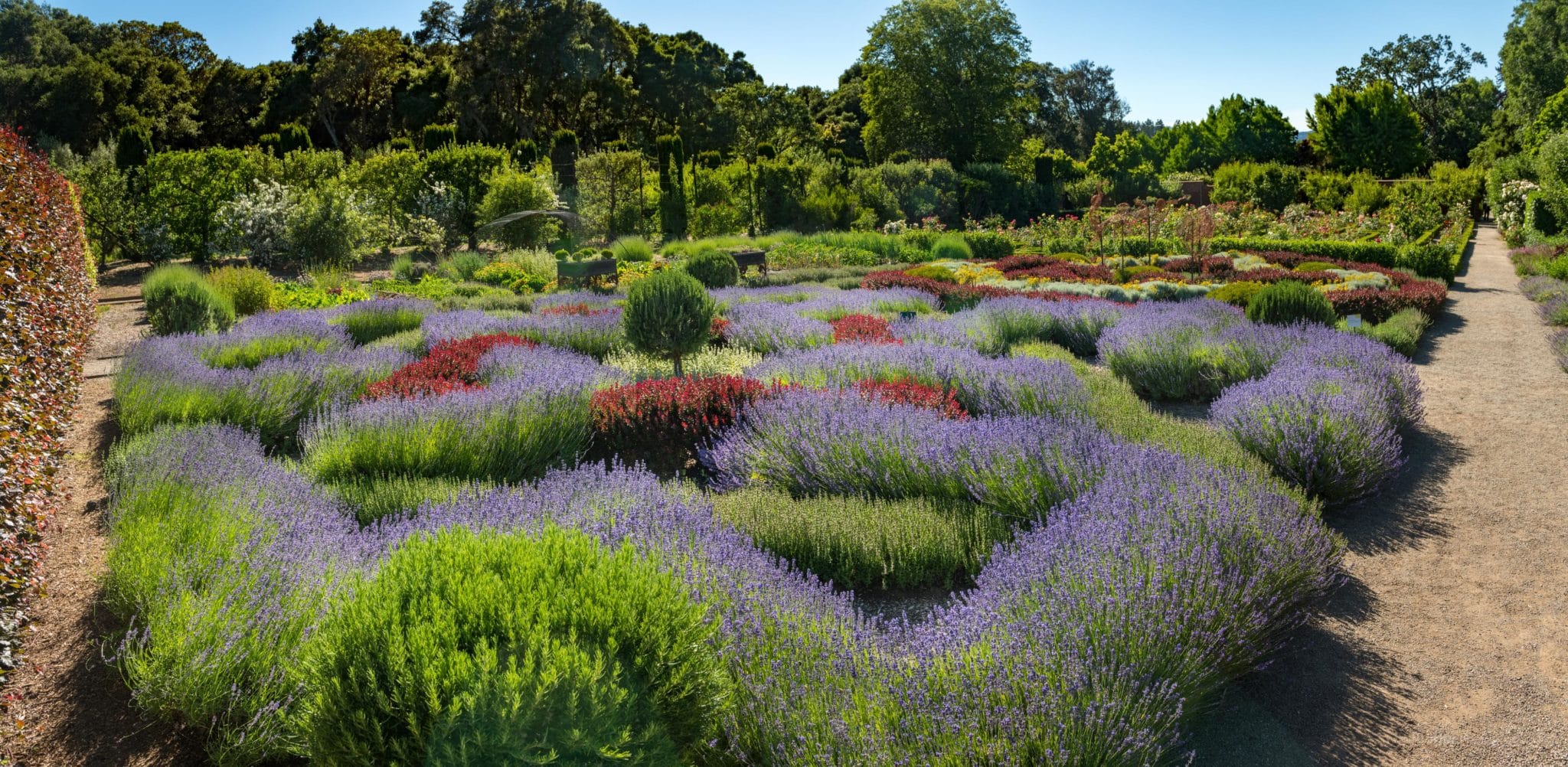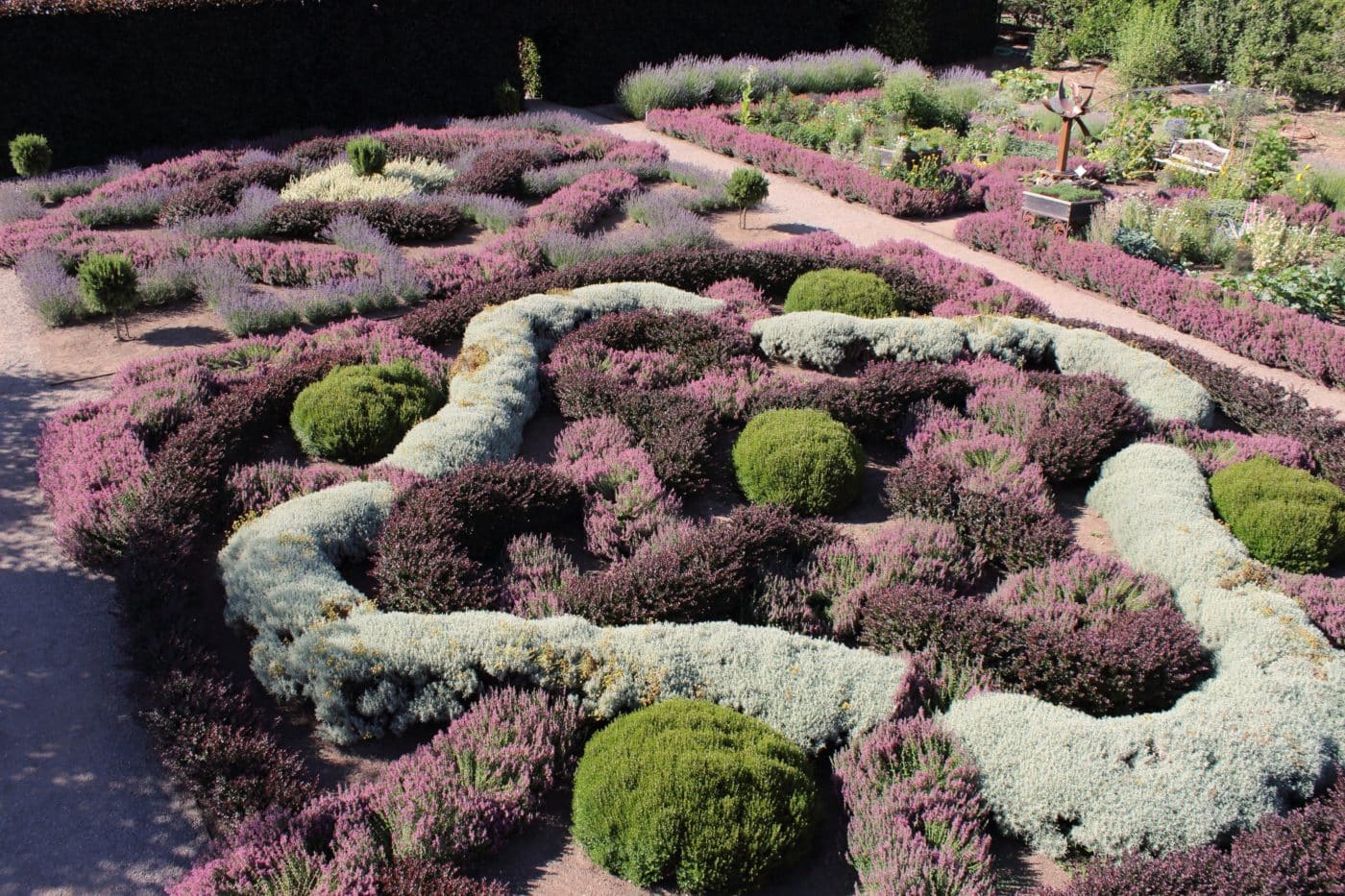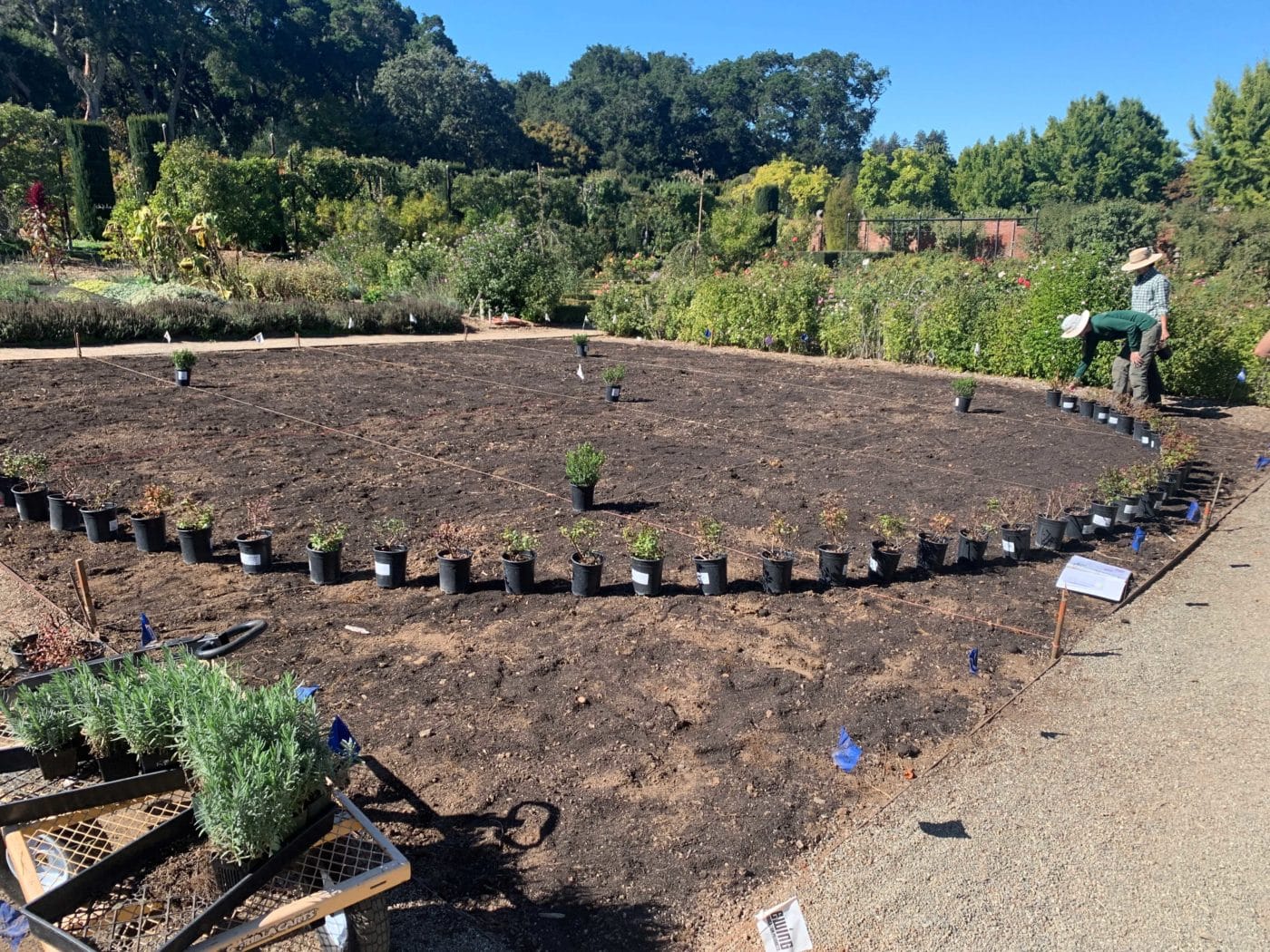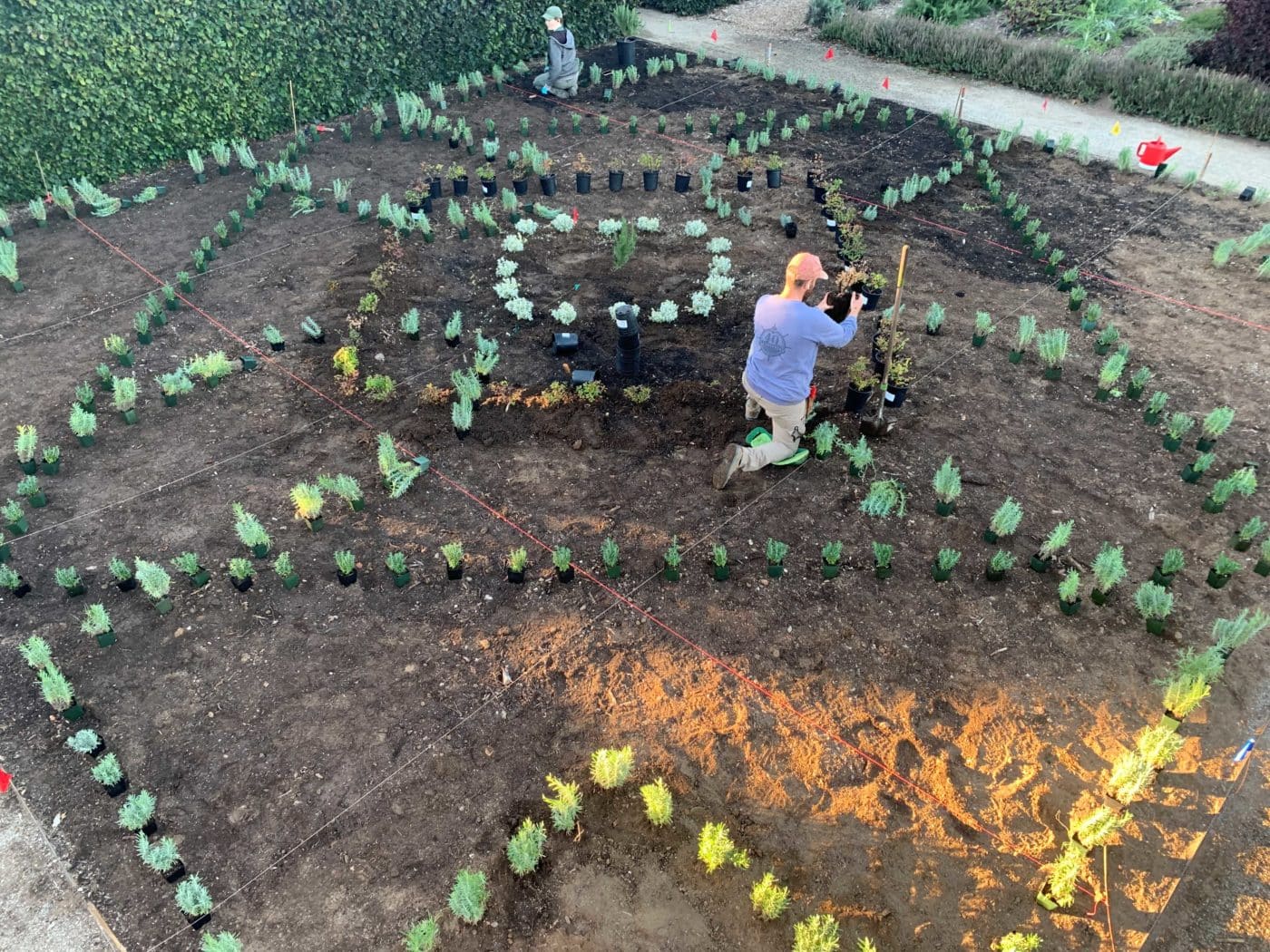Renovating Filoli’s Knot Gardens

Photo by Jeff Bartee
On a warm evening this summer, you may have smelled the Knot Gardens before you even saw them. Purple lavender and spicy-scented rosemary intertwine and overlap in intricate patterns, reminiscent of a Celtic knot.
With the fall colors has come change – it’s time to renovate the Knot Gardens to ensure they thrive for years to come! Director of Horticulture Jim Salyards shares some history and details about the renovation project.
History
The Knot Gardens at Filoli are not an original feature of the garden. The space where they sit now originally housed more Cutting Garden beds. But in Filoli’s early days as a public garden, its governing board and other active community members were looking for ways to enhance the display for our guests.
Members of the Woodside-Atherton Garden Club suggested adding a formal knot garden, a type of interlacing geometric design that became popular in England during the 1500s. The Garden Club of America (GCA) had tasked its chapters with commemorating the 1976 bicentennial, and the Woodside club felt that this project was perfect for the occasion. The club had strong ties to Filoli, since Lurline Roth and her daughter, Lurline Coonan, were both members.
All the decisions behind where and what to do are somewhat lost to time, but as Filoli is a European-inspired garden, the addition of knot gardens was fitting. With sufficient cutting beds to the south, it was not an issue to adapt the space to a decorative use.
Once approved by the board, the project got underway. A design was determined, utilizing undulating Mediterranean herbs making up the palette, and plants were soon procured for the project. Members of the garden club laid out the plants, planted them, and did the tending for the initial few years. Some of the original plants chosen did not perform well, so new plants were tried until the final group was determined. For the past 40 years, the palette has been the following:
Upper (South) Knot Garden
- Lavandula angustifolia ‘Hidcote’ – English lavender
- Berberis thunbergii ‘Crimson Pygmy’ – dwarf Japanese barberry
- Ballota pseudodictamnus – woolly horehound
- Teucrium chamaedrys – germander
- Rosmarinus officinalis ‘Tuscan Blue’ – rosemary
Lower (North) Knot Garden
- Santolina chamaecyparissus var. nana – dwarf lavender cotton
- Berberis thunbergii ‘Crimson Pygmy’- dwarf Japanese barberry
- Myrtus communis ssp. tarentina ‘Compacta’ – dwarf myrtle
- Teucrium chamaedrys – germander

Over the years, some of these plants have never been replaced (germander, myrtle and barberry), while others have been replaced at regular intervals (lavender and lavender cotton).
Renovation
Fast forward to the present, and our Knot Gardens have reached the point where several plants need refreshing, the pattern of the plants is wonky in places, and the soil level has slowly risen over the years, resulting in water running off the beds. Last year we determined that it was time to do a complete renovation of the Knot Gardens. We propagated the lavender from the present plants, and then worked with a handful of nurseries to procure the remaining plants. By the end of September, all of the plants were on site and ready for installation.



Fall is always a perfect time for planting in your garden, particularly in our California climate. Plants are installed September through November, while the ground is still warm, and just before the winter rains are starting. We removed all the Knot Gardens’ former plants, prepped the soil, and completed planting before the end of October.
Between now and when our Knot Gardens are at their peak of show in May-July each year, the plants will establish, start to grow and fill in, and have their first bloom next spring. Be sure to watch the progress over the coming years and know that you were able to witness the establishment of Filoli’s Knot Gardens, Chapter Two.
